If you visit nurseries, you will find that they have hundreds of plant stocks: perennials, grasses, tropical plants, succulents, flowers, and many more. But have you ever wondered where nurseries get their plants from? That’s what we will discuss today.
Nurseries generally get their plants from wholesale nurseries. Apart from that, they also get the plants from their locality through cuttings and seeds. They collect and bring them back and grow them successfully in a controlled environment. Most nurseries propagate their plants as well.
But that’s not all. So, read this article till the end to know where and how the nurseries get their plants.

Where do the nurseries get their plants?
As mentioned earlier, the nurseries get their plants from different resources, a few being the most common ones.
Let’s have a look at the resources from where the nurseries get their plants:
Wholesale nurseries
The nursery wholesalers are the first important and common source from which the nurseries receive their plants.
The wholesalers sell their products in bulk.
So, the nurseries bring most of their plants from the wholesalers and set them up in the nurseries and greenhouses.
The nurseries bring their plants from the wholesalers in pots or as bare-root plants.
The bare rootstocks are brought into the nurseries during the late winters.
Then, they are transferred in pots of various sizes, 1-gallon or 5-gallon, depending on the plant size.
Some perennials are also transplanted at that time in 1 or 3-gallon pots.
For example, peonies are transplanted in 2-3 gallon pots.
The potted plants are brought into the nurseries after the risk of frost has passed.
It can prevent the bugs and the leaves from suffering frost damage.
The plant materials from the old storage are also brought out from the hoop houses when the frost risk is over.
The hoop houses protect the old plants from the cold, harsh winters.
Cuttings
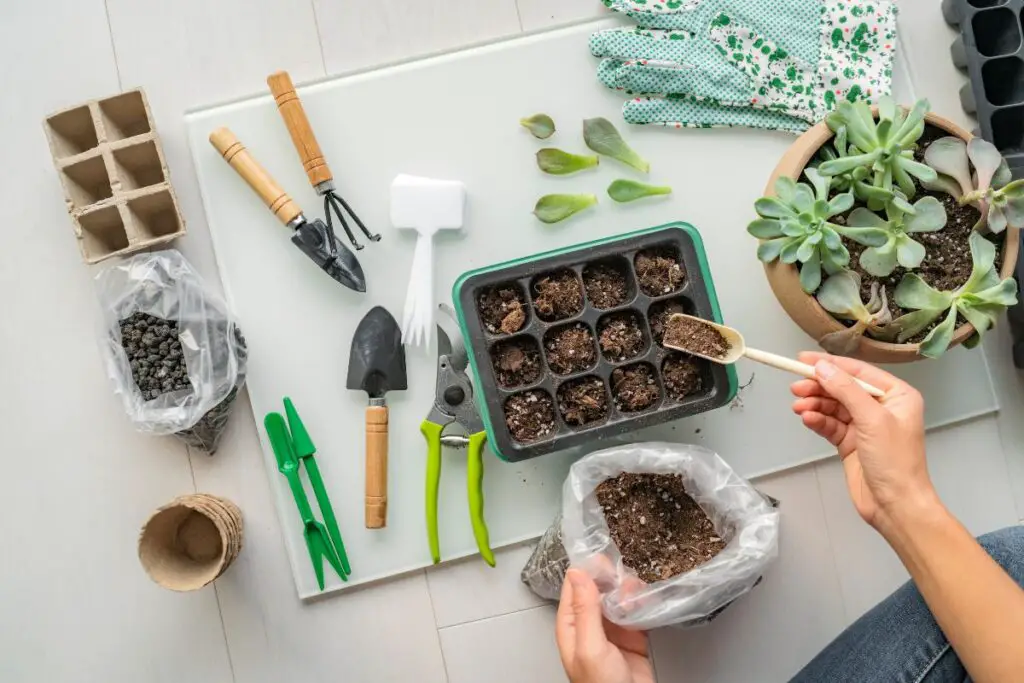
The nurseries can also receive their plants from the cuttings of some old plants.
Even the wholesalers do the same thing.
The nurseries collect the cuttings from the mature plants from their old storage or locality and grow them in their nurseries under good facilities and controlled environments.
Within no time, the cutting changes to a new mature plant.
The process goes on like this every time.
It is how they increase their plant stocks.
Seeds
The nurseries get their plants from the seeds of different plants.
They collect the seeds either online or from different other plant stores.
Then, they grow them in their nurseries by following the correct steps and techniques.
The nurseries will also collect seeds from wholesalers.
But, some nurseries contact stores that specialize in seedlings.
Nurseries buy the seedlings specifically from these nurseries to receive a huge amount of plants quickly.
The seeds are then treated, stored, planted, and grown in a controlled environment.
It allows the nurseries to grow lots of plants together simultaneously, without wasting time and wasting it.
Looking for gardening supplies? We have tested 100's of products before recommending them to you guys. Check out our best pick below:
| Image | Gardening Supplies | Best Price? |
|---|---|---|
 Top
Top Top
Top | Raised Garden Bed Kit | Check On Amazon |
 | XLUX Soil Moisture Meter, Plant Water Monitor, Soil Hygrometer Sensor for Gardening, Farming, Indoor and Outdoor Plants, No Batteries Required | No Results |
 Top
Top Top
Top | 82 Pcs Garden Tools Set and Extra Succulent Tools Set | Check On Amazon |
 | Joeys Garden Expandable Garden Hose with 8 Function Hose Nozzle, Lightweight Anti-Kink Flexible Garden Hoses, Extra Strength Fabric with Double Latex Core, (50 FT, Black) | No Results |
 Top
Top Top
Top | Dual Chamber Compost Tumbler | Check On Amazon |
 Top
Top Top
Top | Sunnyglade Plant Stakes | Check On Amazon |
 Top
Top Top
Top | Organic Cold Pressed Neem Seed Oil | Check On Amazon |
 Top
Top Top
Top | Mighty Mint Gallon :-Insect and Pest Control Peppermint Oil | Check On Amazon |
 Top
Top Top
Top | Scotts DiseaseEx Lawn Fungicide | Check On Amazon |
 Top
Top Top
Top | Jacks Classic 20-20-20 All Purpose Fertilizer | Check On Amazon |
 Top
Top Top
Top | 30,000 Seeds Pollinator Attracting Wildflower Mixture | Check On Amazon |
 Top
Top Top
Top | Survival Vegetable Seeds Garden Kit-Over 16,000 Seeds | Check On Amazon |
Out of state
Many tropical plants like hibiscus, palms, and maximum houseplants can give your home a touch of nature and refreshment.
These kinds of plants make their statements when grown in pots.
The nurseries gather information about the customers’ needs before collecting tropical plants.
It depends on the fact that which plants do customers demand more at present.
Then, the nurseries place a big order to the suppliers outside where most of these plants are available, for example, in Florida.
Once the materials arrive at the nurseries, the workers turn their stores into a paradise by arranging them.
Sometimes, the nurseries demand big trees for big jobs like placing plants in buildings or construction sites.
These trees sometimes come out of the state from trusted dealers.
Some countries can provide specific plants and are even famous for the same thing, for example, Carolina and Tennessee.
Nurseries are also interested in growing plants like conifers.
Nurseries can bring these plants from areas like Oregon, where plants like Japanese Cedar and Golden Dwarf Hinoki Cypress are ideal for growing.
So, if nurseries want some distinctive plants other than the native ones, such areas are the sources from where they order these plants.
From the locality
Sometimes the nurseries also gather plants from their localities.
For example, if a nursery worker has a neighbor with plants not present in the nurseries.
Let’s imagine you have some plants in your garden or home that have overgrown.
You also have a nursery worker as a neighbor whose nursery doesn’t have the plants you own.
So, the person will cut your plants to keep them in shape, collect the removed overgrown parts, and take them to the nursery.
The worker will cut down some cuttings from those overgrown parts and use them to grow new plants.
The nurseries follow the same process whenever they bump into a plant that is not present in their stores.
However, the nurseries don’t always follow this. In most cases, they collect plants in the above other ways.
From other local nurseries
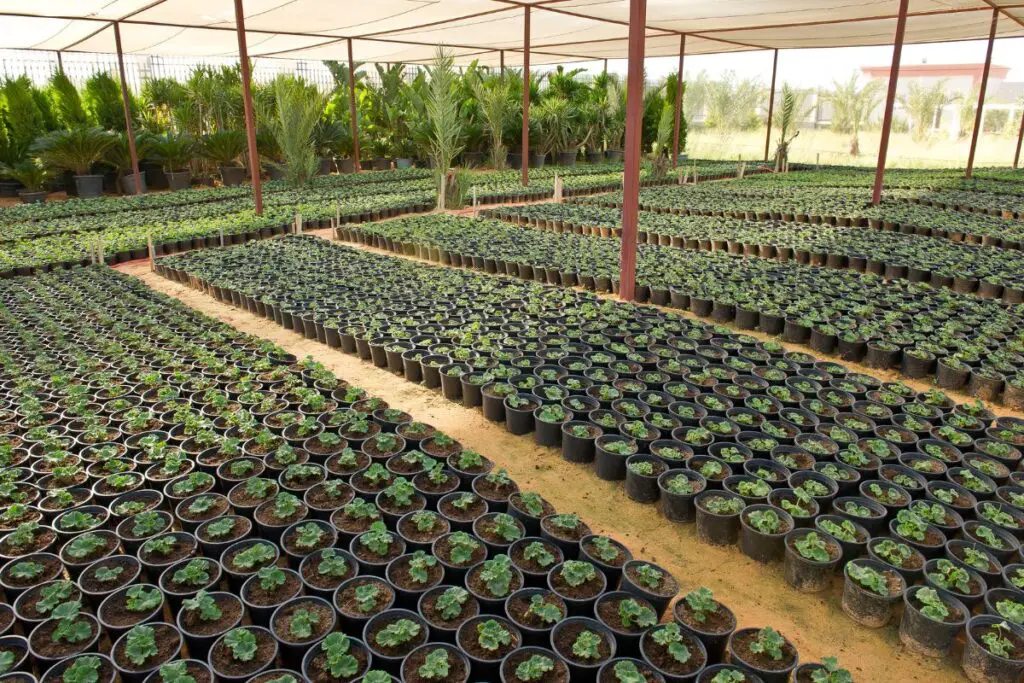
Suppose you want to open a nursery.
You can keep buying plants one by one from your local nurseries and start a small local business of your own.
Slowly, you can make your nursery after collecting the plants from your local nurseries.
That is how most small nurseries get their plants.
You can also collect seeds and cuttings from the stores to grow the plants on your own.
What do the nurseries look for while collecting the plants?
The nurseries always have a list of growers and shops that grow the best quality plants with good care and maintenance.
Since these plants should remain healthy in the long run and the customers must be impressed by the quality, it is very important to collect plants from good growers.
As a horticulturist, you must collect healthy plants for your nursery.
If any plant seems slightly discolored or droopy, nurseries must avoid it.
But, if the plant has been droopy right after planting, then that’s fine because a plant receives a change in its growing condition after planting.
After some time, it will grow fine once it adjusts to the new environment.
So, these things are thoroughly checked by the horticulturists while collecting plants and giving orders for their nursery stores.
How are the plants grown in the nurseries?
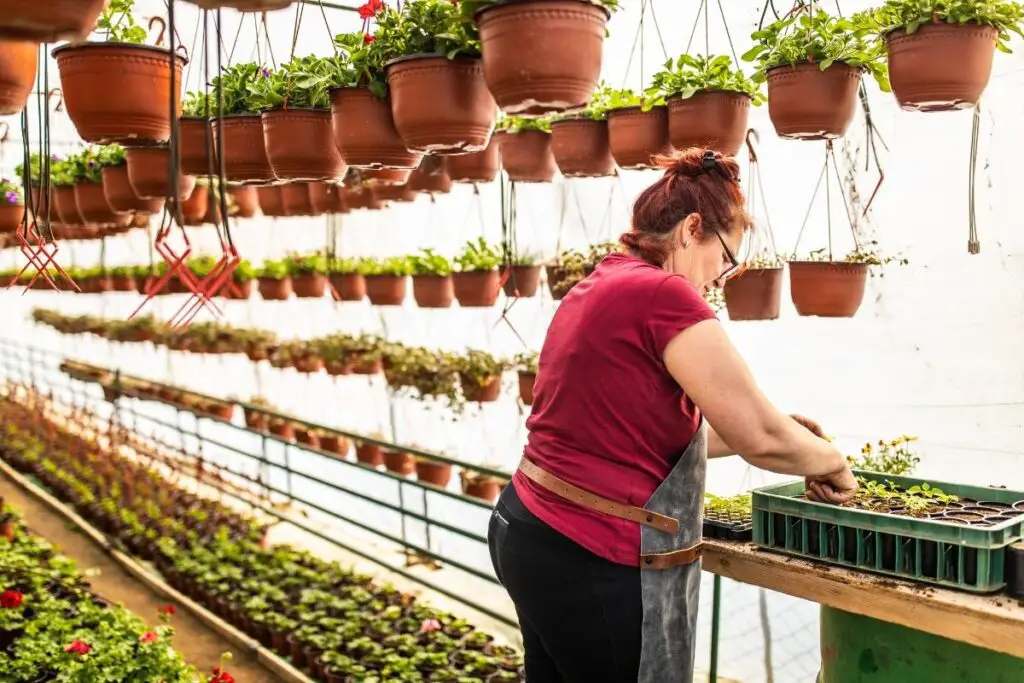
In the nurseries, the plants are grown with care, and a controlled atmosphere is maintained around them so they can thrive well.
The plants are nurtured with light, water, fertilizer, temperature, and humidity.
Everything remains under control.
The nurseries repot the plants carefully at the right time.
The nurseries sometimes grow small young plants in plastic bags.
It supports good drainage and aeration.
Plastic bags also encourage more and better root growth, leading to healthy and strong plants.
The nursery uses various types of fertilizers, like NPK, DAP, organics, inorganics, etc., for the plants’ healthy growth.
They use them in the right amount, frequency, and time.
Regarding the growing techniques, nurseries mostly use cuttings or seeds to grow the plants.
Most of the annual plants are propagated and grown using seeds and seedlings collected from the seedling sellers.
Though these procedures are common and easy, the nurseries use many other processes to grow plants.
How can I start a nursery?
Starting a nursery business as a beginner can be a huge challenge for you.
There are a lot of things to know both about plants and business.
It requires a lot of dedication and hard work to start a nursery and excel in the business.
Besides, you need to have some basic facilities that can at least help the plants live long, such as:
- Different soil types
- Various equipment and tools
- Pots of different types and shapes
- Electricity
- Packaging and shipping
- Knowledge about the plant’s basic needs and a lot more
Starting a nursery is quite a job.
Along with all the knowledge and facilities, you have to deal with floods, rains, pests, diseases, snowfall, etc.
There are various other things and factors to consider.
But, for a start, below are some basic tips that can help you begin the process:
Type of plant nurseries
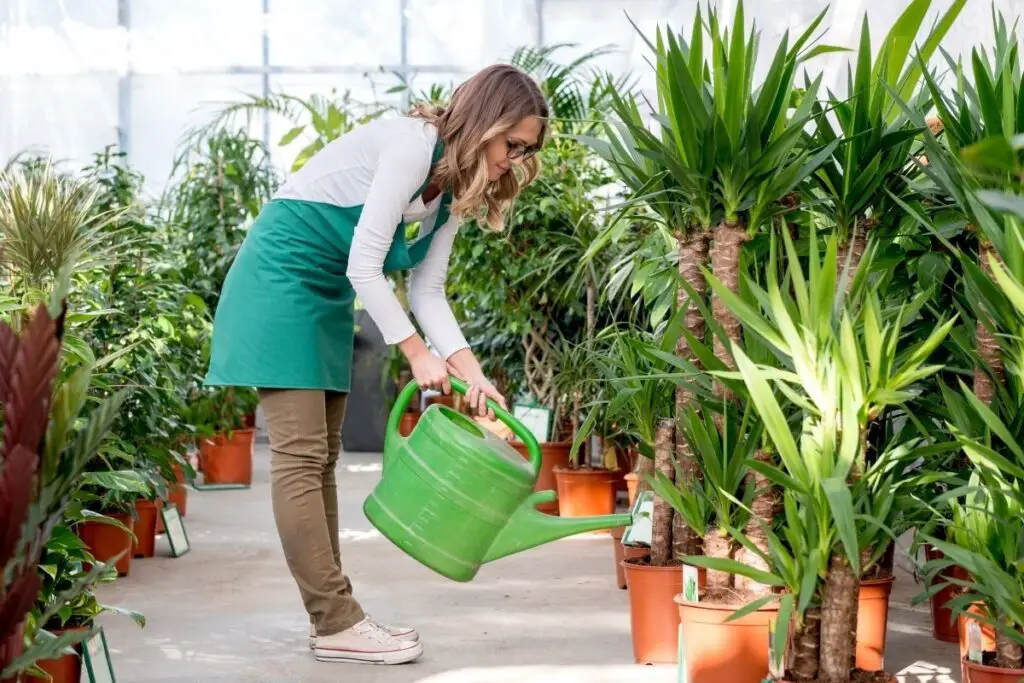
To add plants to your nursery, you need to know the nurseries.
There are two types of nurseries:
- Wholesale nurseries
- Retail nurseries
Wholesale nurseries are used for larger operations like retailers, municipalities, huge distributors, and landscape contractors, where you order many plants.
Retail nurseries are the nurseries that collect plants from wholesalers.
These nurseries are for small functions, selling the plants to homeowners.
Some nurseries also specialize in specific plant types like native plants, flowering plants, tropical plants, only houseplants, trees, shrubs, seedlings, etc.
Some stores have only online facilities.
So, before you collect plants, know these nurseries and then collect them.
I would recommend you first begin with retail nurseries.
Once your nursery becomes well-established, you can go for wholesale nurseries.
Research is important
Before starting a nursery and collecting plants, it is necessary to do a bit of research from books and magazines.
It would be best to study the plants and how to care for them and keep them long-lasting.
It will help if you visit the stores and nurseries to see how they manage their plants, how they grow them, and what necessary equipment and tools are needed in the nurseries.
You can consult and start working with other professional groups and organizations.
Learning the basics of running a small business can help you to start a nursery.
You can attend classes, seminars, and webinars to learn about it.
Site selection
Site selection is an important part while starting a nursery.
A perfect would be:
- A place where people will stop and notice the store.
- A place with an environment ideal for the plants’ growth and development.
- A place with a good source of water, labor, and transportation access.
- Urban areas would be a better place since these areas don’t get a touch of greenery. People would love to have plants to remain connected to nature.
- A place where already 1-2 shops are present. It will bring customers to your nursery and give you a chance to compete.
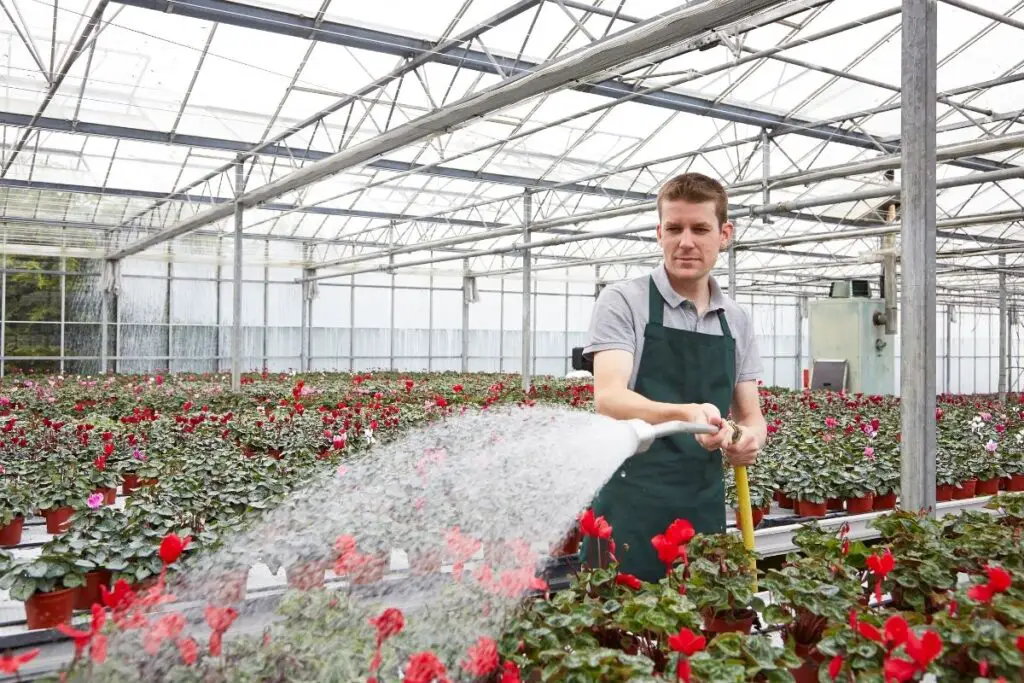
Business requirements
You must know the business setup requirements, such as permissions, licenses, and verified certificates.
Consult with an attorney, lawyer, and tax accountants.
Check for zoning, environmental problems, labor relations, tax issues, etc.
Money
It is another important factor for a nursery start-up.
Starting a nursery business requires a lot of money investment due to the basic requirements:
- Research
- Collecting equipment
- Getting a good site
- Dealing with lawyers and accountants
- Collecting permissions and certifications
Everything will need a lot of money.
You must also ensure that you are investing money in the right thing.
Before investing, plan how and in what ways you will invest it.
You will get a lot of questions in your mind.
You have to find the answer to them, for example, whether you have money or you need loans, whether you have to construct buildings, greenhouses, and irrigation systems, and so on.
Final thoughts
Nurseries have a lot of sources to collect the plants, like wholesale nurseries, cuttings of other plants from the neighborhood, seeds from seedling stores, or from out of state from trusted owners.
Nurseries always choose healthy plants and seeds that will keep the plant alive for a long time.
To start a nursery, you must consider many factors – researching, permissions, nursery types, ideal sites, business requirements, and planning to use money as needed.
Reference: Effect of Nursery Production Method, Nursery Growing Media, Nursery experiments for improving plant quality, Nursery Management.
